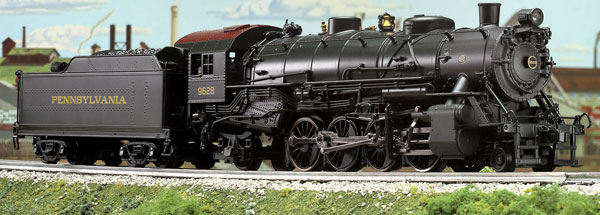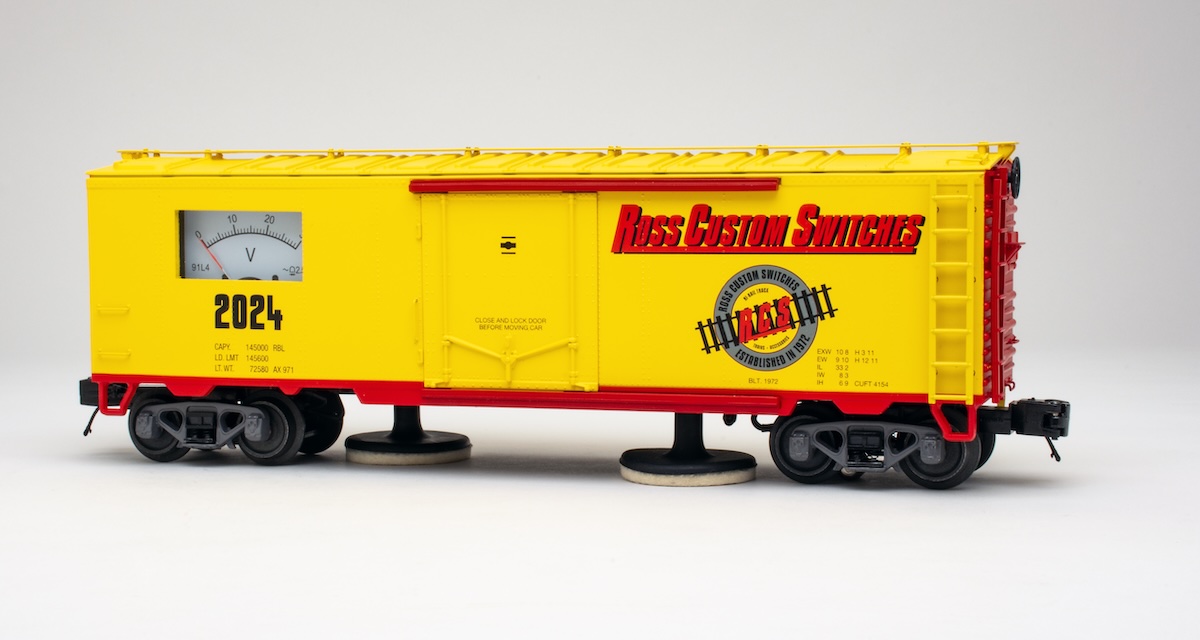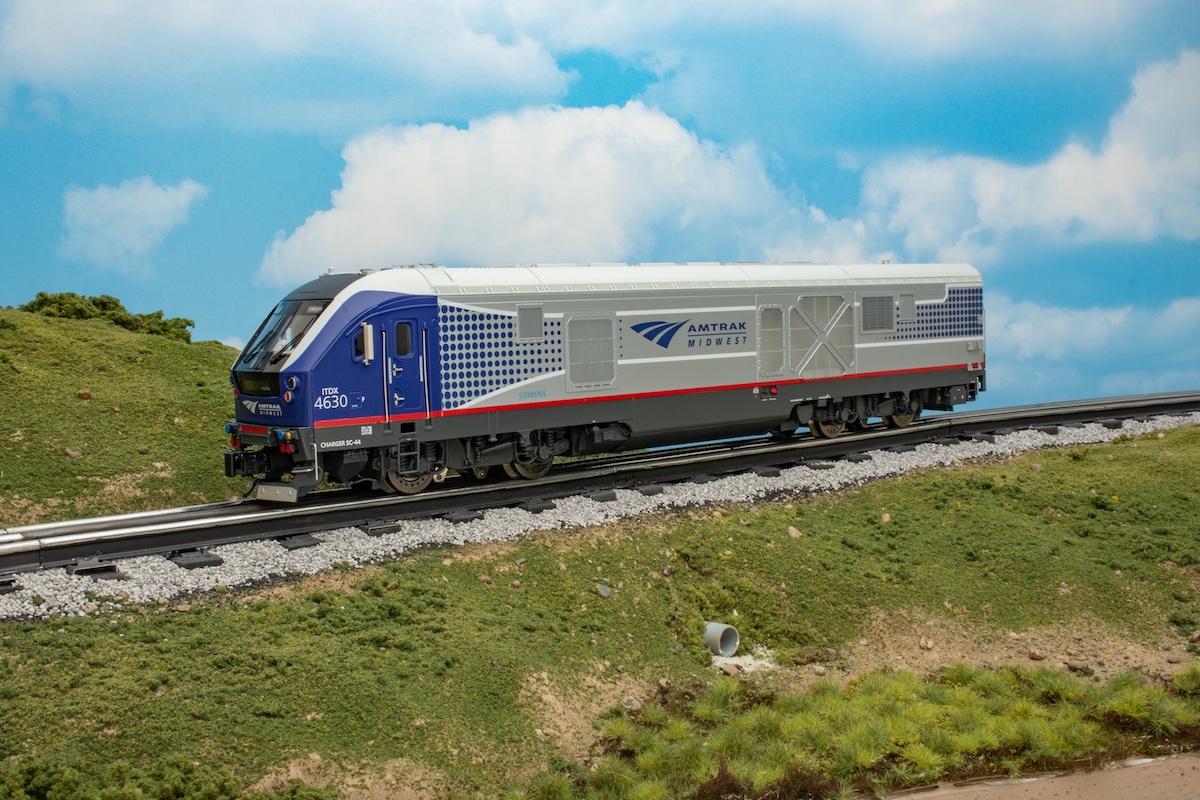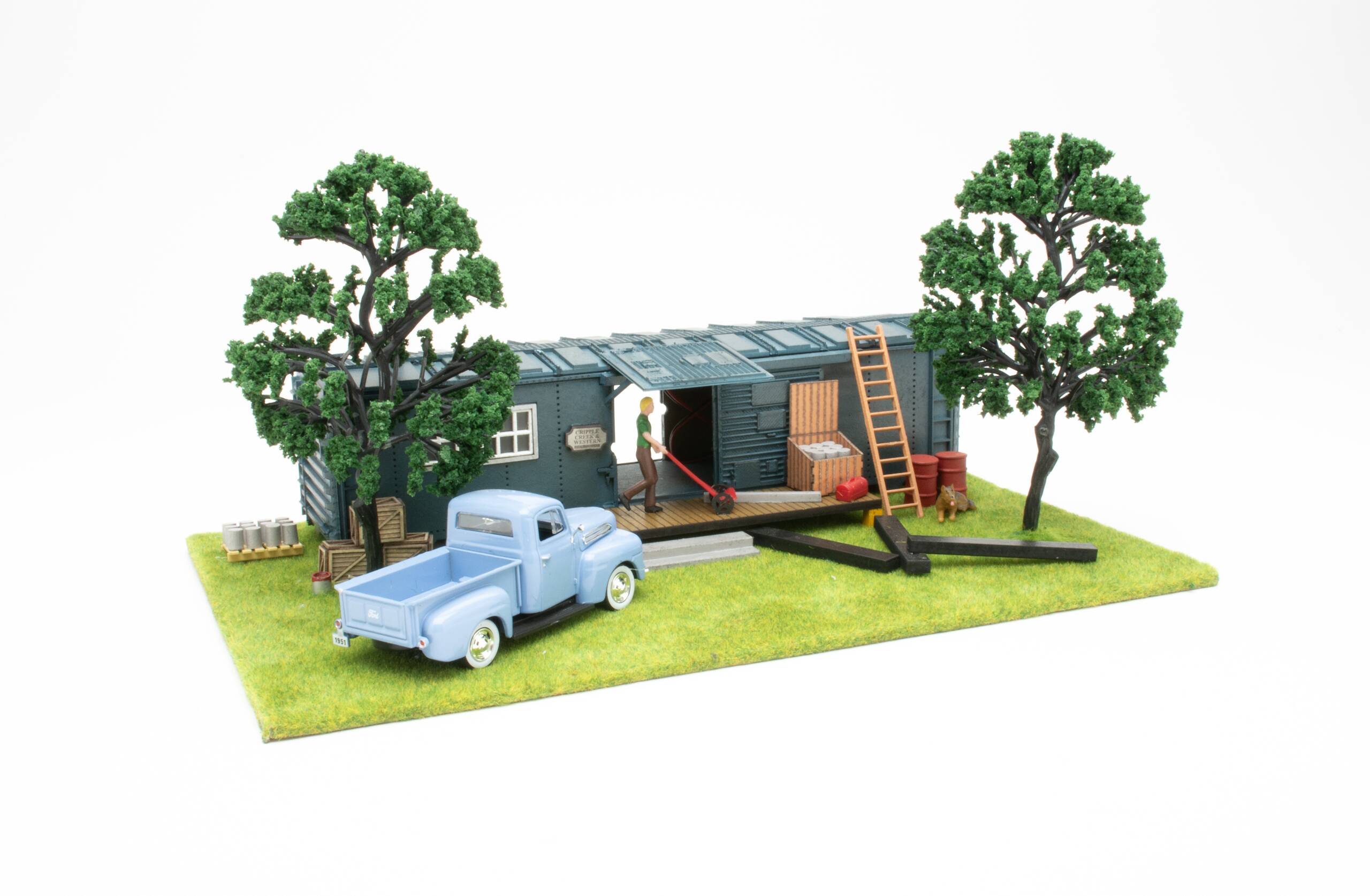The United States entered the war on April 6, 1917, and that December President Wilson placed U.S. railroads under the control of the railroad administration (USRA).
In an effort to streamline locomotive production for what was anticipated to be a long war, the administration worked with Alco, Baldwin, and Lima to offer a series of generic locomotives in 12 wheel arrangements.
It was thought that since there was a war on, this approach would avoid railroads wasting time and resources to create new locomotive types when satisfactory models already existed.
The 2-8-2 Mikado was offered in both light and heavy versions. Our two K-Line light Mikado locomotives were painted for the Pennsylvania (that owned six) and the Southern (that owned 25 between the Southern itself and the affiliated CNO&TP).
The model
The challenge facing any O gauge locomotive manufacturer today is a tough one. Since nearly every locomotive you could imagine has already been made in O gauge, product development isn’t a seat-of-your-pants proposition.
K-Line has bet that the USRA Mikado, owned by 32 railroads, will have broad appeal. Adding to that, K-Line has given us a good faith effort to create models with details unique to each road name. As seen with our samples, the headlights, bells, and other details are different on the Pennsylvania and Southern models.
I was also pleased to see individual nomenclature plates on each locomotive. The Pennsy locomotive has a round plate with a readable class listing while the Southern model has a diamond-shaped Lima builder’s plate and a square trust plate.
The smokeboxes of both engines are well appointed. The Pennsy locomotive wears a traditional high-mounted headlight and the Southern version has a centered headlight. You’ll also notice the Pennsy unit has step boards on the pilot while the Southern locomotive has a more traditional “cow catcher” pilot.
The boiler tooling is superb: smooth where it needs to be and textured where detail is needed. Both models have cast-in and add-on pipes, and cast-in boiler bands and rivets. Of special note are some cast-in pipes running along the bottom of the firebox and the underside of the boiler.
The cab has a decorated backhead, two crew figures, two opening roof hatches, firebox glow, and a single bulb for illumination. The bulb is on the fireman’s side and toward the upper end of the cab, so it illuminates without drawing attention.
The running gear and driver rims are chemically blackened, but the rims on the Pennsy version are a bit bright for my taste. However, it does make for a fascinating show when the locomotive is blazing around a layout.
The tender features marker lights, backup lights, and a coil coupler. The volume and RailSounds/SignalSounds switches are concealed beneath the hinged water hatch.
On the test track
We received two samples of the scale-sized Mikado from K-Line, but one failed to operate right out of the box. It wouldn’t move – it just sat idle on the track, generating steam sounds. We had no trouble, however, with the operation of our second sample.
On the test track our sample recorded a conventional-control mode low speed of 13.1 scale miles per hour and a command-control mode low speed of 7.8 scale mph. At 18 volts in conventional mode, our high speed average was 75.2 scale mph.
The locomotive’s can-style motor was generally very smooth and responsive to throttle inputs above 10 volts or so.
Drawbar pull for the 8 pound locomotive was 2 pounds, 1 ounce.
The RailSounds package sounded pretty good, with the tender doing a first-rate job as the speaker housing. A check of the TrainMaster functions found all working fine.
The smoke unit was a bit tepid on the lower end of the voltage scale, but once things got warmed, it pumped out a nice volume of smoke.
The K-Line USRA Light Mikado is a sharp-looking and speedy little locomotive. While a scale model, its smaller dimensions would be at home on both large and small O gauge pikes, on freight and even passenger trains.














